Q
how much is a new tesla battery model 3
In Malaysia, the cost to replace the battery for a Tesla Model 3 typically ranges from around RM40,000 to RM60,000. The exact price depends on the battery capacity—whether it's the Standard Range or Long Range version—and whether labor costs are included. It's best to check with Tesla's official service centers or authorized repair shops for the most up-to-date quotes.
Tesla batteries use advanced lithium-ion technology, and they usually last between 8 to 15 years or over 200,000 kilometers. You can actually extend the battery's health by avoiding frequent fast charging and deep discharges in your daily use.
Also, the Malaysian government offers tax incentives for electric vehicles, like import duty and sales tax exemptions. While this doesn't directly cut the battery replacement cost, it might help lower the overall ownership expenses over time.
For owners, regularly checking the battery status through the car's system and following the official maintenance guidelines are key to keeping the battery performing well. If you're on a tight budget, it's worth looking into third-party warranty services or battery recycling programs—some providers offer discounts or trade-in options.
Special Disclaimer: This content is published by users and does not represent the views or position of PCauto.
Related Q&A
Q
What Segment is Tesla Model 3?
The Tesla Model 3 falls into the D-segment category (also known as the "mid-size car" or "Executive Car" niche). This segment typically includes mid- to high-end models with a body length of around 4.6 to 4.9 meters and a wheelbase of 2.7 to 2.9 meters. Its competitors encompass traditional luxury brand models like the BMW 3 Series and the Mercedes-Benz C-Class.
In the Malaysian market, the Model 3 has become a key choice for local consumers to access high - end electric vehicles, thanks to its advantages in electrification technology (such as a range of up to 491 kilometers under the WLTP standard on a single charge) and intelligent features (like Autopilot assisted driving). Notably, the Malaysian government offers preferential policies such as exemption from import duties for electric vehicles, making the Model 3 more price - competitive locally.
The D - segment cars, with their moderate body size (for example, the Model 3 is 4,720mm long), combine flexibility and space practicality on Malaysian city roads, making them particularly suitable for congested urban environments like Kuala Lumpur. Other electric options in the same segment include the BYD Seal and the Hyundai Ioniq 6. However, the Model 3 still maintains a significant edge, thanks to Tesla's well - established charging network (12 Supercharger stations have been deployed across Malaysia).
Q
What is the Reslae Value of Tesla Model 3?
The Tesla Model 3 has a relatively high second - hand resale value in Malaysia. This is mainly due to its brand influence, the maturity of electric vehicle technology, and low maintenance costs. According to market observations, the Model 3 can still retain about 60 - 70% of its residual value after three years of use, which is better than many fuel - powered vehicles in the same class. This is related to its long battery life, continuous software updates, and the improvement of charging infrastructure.
For Malaysian consumers, the tax - exemption policy for electric vehicles further reduces the cost of purchasing a car, indirectly increasing the demand in the second - hand market. In addition, Tesla's global unified pricing strategy reduces price fluctuations, making the second - hand car prices more stable.
If you're considering buying a Model 3, it is recommended that you pay attention to the battery health and warranty period, as these factors can significantly affect the resale value. Meanwhile, the gradually expanding charging network in Malaysia also makes the use of electric vehicles more convenient, which will help maintain its second - hand market performance in the long run.
Q
What is the PCD Size of Tesla Model 3?
The PCD (Pitch Circle Diameter) of the Tesla Model 3 is 5x114.3 mm. This means that its wheels have 5 bolt holes, evenly distributed on a circle with a diameter of 114.3 mm. This is a common specification for many modern cars, especially widely used in Japanese and some European models. For Malaysian car owners, it's very important to know the PCD size because it's a key parameter when replacing wheels or upgrading the braking system, ensuring that the new wheels match the original vehicle perfectly. Additionally, the PCD size also affects the vehicle's handling and safety. An incorrect PCD may lead to the wheels not being installed properly or vibrations during driving.
The wheels of the Tesla Model 3 are also compatible with wheels having a center bore diameter of 64.1 mm, and the bolt thread specification is M14x1.5. These details need to be noted when purchasing modified wheels. Since the climate in Malaysia is rainy and humid, it is recommended that car owners choose high - quality wheels and regularly check the bolt tightening to ensure driving safety.
Q
Does Tesla Model 3 Support Apple Carplay?
Currently, the Tesla Model 3 doesn't support the Apple CarPlay feature. This is mainly because Tesla adheres to using its self - developed Infotainment system. This system integrates functions such as navigation, entertainment, and vehicle control, aiming to offer an integrated user experience. Although Apple CarPlay is a standard or optional feature in many other brands' models, Tesla owners can achieve similar functions through its built - in streaming services, Bluetooth connection, or the Tesla mobile app.
For users in Malaysia, Tesla's local services are gradually being improved. For example, it supports local maps and voice commands. So, even without Apple CarPlay, daily use remains convenient. If you have high requirements for in - vehicle connectivity functions, you can look into some models from other brands like BMW, Mercedes - Benz, or the local brand Proton. These models usually offer Apple CarPlay support. However, Tesla's unique advantage lies in its highly integrated system and OTA update capability, which can continuously bring new features to users.
Q
What is the Tyre Brand of Tesla Model 3?
The common original - equipment tire brands for the Tesla Model 3 in the Malaysian market include Michelin, Bridgestone, and Goodyear. The specific configurations may vary depending on the vehicle model version or production batch. For example, the high - performance version may be paired with tires like Michelin Pilot Sport 4S, which focus on grip. The selection of these international brands is to balance the instantaneous torque requirements unique to electric vehicles, low - noise performance, and range optimization. In particular, Michelin's noise - reduction technology can effectively offset the road noise that becomes more noticeable due to the lack of engine noise in electric vehicles.
It's worth noting that Malaysia has a tropical climate with frequent rainfall. Car owners can pay attention to the wet - road performance indicators of tires (such as the AA traction rating in the UTQG grade). When replacing tires, they can also consider the commonly seen Continental from Germany or locally - assembled Japanese brands like Yokohama, which also have formulations suitable for high - temperature and rainy road conditions. Tesla service centers usually recommend suitable replacement tires based on the road conditions in Malaysia. It is recommended that car owners regularly check the tire pressure to ensure it is within the numerical range required for electric vehicles, which is particularly important for maintaining the driving range.
Q
Is Tesla Model 3 a Good Car? Learn the Pros and Cons Here
As a pure - electric sedan, the Tesla Model 3 has a certain appeal in the Malaysian market. Its advantages include excellent acceleration performance, advanced autonomous driving assistance features, and relatively low daily usage costs. In particular, the electricity cost is more economical compared to that of fuel - powered vehicles, making it suitable for urban commuting in Malaysia. Additionally, the Model 3's high - tech interior design and OTA remote upgrade function also provide users with a convenient experience.
However, its drawbacks are also worth noting. For instance, given that the charging infrastructure in Malaysia is not fully popularized, long - distance travel may encounter the problem of inconvenient charging. Meanwhile, the relatively high initial purchase price and the later battery replacement cost may also make some consumers hesitate.
For Malaysian users, if their daily commuting distance is short and there are charging facilities at home or in the workplace, the Model 3 is a good choice. But if they often need to drive long - distance, they may need to plan the charging route more carefully.
Overall, the Model 3 stands out in terms of environmental protection and technology. However, before making an actual purchase, it is necessary to comprehensively consider personal vehicle - using needs and budget.
Q
What is the Width of Tesla Model 3?
The body width of the Tesla Model 3 is 1,848 millimeters (excluding mirrors). This dimension performs excellently in the urban driving environment in Malaysia. It's suitable for maneuvering through narrow streets while still offering a spacious interior. The Model 3's streamlined design not only optimizes the drag coefficient to improve the range but also incorporates an advanced layout of cameras and sensors to support the Autopilot intelligent driving function.
For Malaysian consumers, the width of the Model 3 is similar to that of common mid - sized Japanese or European sedans in the local market. However, its electric platform structure allows for higher utilization of interior space, especially in the rear legroom. Notably, since electric vehicles don't require the traditional transmission structure, the central floor is completely flat, which further enhances the seating comfort.
Against the backdrop of the increasing popularity of charging facilities in Malaysia, the Model 3's compact size and efficient energy consumption make it an ideal choice for urban commuting. Meanwhile, its high - tech interior and OTA remote upgrade function also meet the preferences of the local young consumer group for smart cars.
Q
What is the Road Tax Price of Tesla Model 3? How to Calculate?
In Malaysia, the road tax price for the Tesla Model 3 is calculated based on the electric vehicle's motor power (kW), rather than the engine capacity of traditional fuel-powered vehicles. This is a special policy implemented by the Malaysian government for electric vehicles. According to the current regulations, the formula for calculating the road tax for electric vehicles is: a charge of RM20 per kilowatt (kW). For example, the rear - wheel - drive version of the Tesla Model 3 has a motor power of 208kW, so its road tax would be 208 x RM20 = RM4,160. The high - performance all - wheel - drive version has a motor power of 377kW, and its road tax would be 377 x RM20 = RM7,540.
It should be noted that electric vehicles in Malaysia enjoy road tax exemption benefits. As of the end of 2023, the government has temporarily waived the road tax for electric vehicles. Therefore, currently, Tesla Model 3 owners do not need to pay road tax. However, future policies may be adjusted, and it is recommended to follow the latest announcements from the Malaysian Ministry of Transport.
In addition, electric vehicles in Malaysia also enjoy preferential policies such as import tax and consumption tax exemptions. These policies aim to encourage more people to choose environmentally friendly vehicles and reduce carbon emissions.
If you are considering buying a Tesla Model 3, apart from the road tax, you can also learn about practical information such as the distribution of charging facilities and the installation of home charging piles to better plan your vehicle - using life.
Q
What is the Second Hand Price of Tesla Model 3? Check Used Price Here
In Malaysia, the price of used Tesla Model 3s is influenced by factors such as the vehicle's age, mileage, configuration, and condition. Currently, the price range is approximately between 120,000 and 180,000 Malaysian ringgit, depending on the specific circumstances of the vehicle. For example, a 2020 standard - range version with low mileage might cost around 120,000 ringgit, while a well - conditioned 2022 long - range or performance version could reach about 180,000 ringgit.
When buying a used electric vehicle, it's advisable to check the battery's health status and the remaining warranty period. Tesla's official battery warranty usually lasts for 8 years or 160,000 kilometers, which is an important guarantee for second - hand buyers. Moreover, the Malaysian government offers tax incentives for electric vehicles, such as exemptions on import and sales taxes, which indirectly enhances the cost - effectiveness of used Teslas.
If you're considering buying a used Model 3, it's recommended to go through official certified channels or reputable used - car dealers. This ensures that the vehicle has undergone professional inspections and comes with a complete warranty service. Plus, you'll enjoy a more transparent transaction process.
Q
What is the Tyre Pressure of Tesla Model 3?
The recommended standard tire pressure for the Tesla Model 3 is 2.9 to 3.1 bar (42 to 45 psi). The specific values may vary slightly depending on the vehicle configuration or tire model. Owners can find the official recommended values on the label of the door frame or in the vehicle manual. In Malaysia, where the climate is hot, the tire pressure will increase slightly as the temperature rises. It is recommended to check the tire pressure at least once a month, especially before long - distance driving, to ensure driving safety and energy - efficiency. Using a Tire Pressure Monitoring System (TPMS) can monitor the tire pressure status in real - time. If the tire pressure is too low, it will increase tire wear and energy consumption; if it is too high, it will affect the grip and comfort. It's worth noting that for electric vehicles, due to the special distribution of battery weight, maintaining the correct tire pressure is particularly important for the range performance. At the same time, it is recommended to choose the original - certified tires to meet the vehicle's performance requirements.
Latest Q&A
Q
What is a 2020 VW Passat worth?
In 2020, the second - hand car prices of the Volkswagen Passat in Malaysia were approximately between RM90,000 and RM130,000. The specific value depends on factors such as the vehicle's condition, mileage, configuration version, and maintenance records. For example, the price difference between the entry - level version equipped with a 1.8 TSI engine and the high - end 2.0 TSI version can be up to RM30,000. Usually, for each additional year of the vehicle's age or every 10,000 kilometers exceeded in mileage, the price will decrease by 5% to 8%.
It's worth noting that as a German mid - size sedan, the Passat has a better resale value in the second - hand market than some Japanese competitors. This is due to its solid chassis tuning and the reliability of the EA888 engine. At the same time, it is recommended that buyers give priority to vehicles with complete original - factory maintenance records and pay attention to checking the shifting smoothness of the 7 - speed DSG transmission. Such details will significantly affect the long - term use cost. In Malaysia's hot climate, special attention should also be paid to the aging of rubber parts. Regularly replacing the coolant and transmission oil can effectively extend the vehicle's service life.
Q
Is a 2020 VW Passat a good car?
The 2020 Volkswagen Passat is a model worth considering in the Malaysian market. It has won the favor of many consumers for its comfort, practicality, and reliable performance. This car is equipped with a 1.8-liter or 2.0-liter turbocharged engine, which provides smooth power output and good fuel economy, making it suitable for both city driving and long-distance travel in Malaysia.
The interior design is simple yet elegant. The materials used are of high quality, and the space is quite roomy. In particular, there's plenty of legroom in the back row, which makes it perfect for family use. In terms of technology features, it comes with an 8-inch touchscreen, Apple CarPlay, and Android Auto, enhancing the convenience of daily use.
Safety is also one of the Passat's strong points. It comes standard with a number of active safety technologies, such as automatic emergency braking and blind-spot monitoring. In Malaysia, Volkswagen has a relatively well - established after - sales service network, so maintenance is relatively convenient.
It should be noted that as a German - made car, the prices of its spare parts may be slightly higher than those of Japanese cars. However, its overall quality and durability are excellent. For Malaysian consumers who value comfort and practicality, the 2020 Passat is a great choice. It is recommended to compare it with Japanese or Korean models in the same class before making a purchase and make a decision based on your own budget and needs.
Q
How big is the trunk of the Passat 2020?
The 2020 Volkswagen Passat has a trunk capacity of 586 liters. This space is more than ample for daily use or family outings. It can easily hold multiple suitcases or large items, which suits the Malaysian consumers' preference for long - distance travel and their relatively high demand for shopping. If you need to expand the space, the rear seats can be folded down in proportion, further enhancing the storage flexibility and making it convenient to carry longer items like golf clubs or camping gear.
In Malaysia's hot and rainy climate, the Passat's trunk design also takes practicality into account. The interior is flat and the opening is large, facilitating the loading and unloading of items. Among cars in the same class, the Passat's trunk performance is above average, balancing comfort and practicality. It's a great option for users who value space and versatility.
Moreover, the Passat's trunk is equipped with useful anchor points and storage features, which make it easy to secure items or store small things in an organized way. These little details can bring a lot of convenience in daily use.
Q
What gas does a 2020 Passat take?
The 2020 Volkswagen Passat is recommended to use RON 95 unleaded gasoline in the Malaysian market. This is the most common and cost - effective fuel choice in Malaysia, which can fully meet the daily needs of the 1.8 TSI or 2.0 TSI turbocharged engines of this model, and it also complies with local fuel standards and vehicle design specifications. If you're after better performance, you can also opt for RON 97 unleaded gasoline. Its higher octane rating can optimize the engine's anti - knock performance under high - load conditions. However, it should be noted that Malaysia uses a floating oil price mechanism, and the cost of RON 97 is significantly higher than that of RON 95.
It's worth mentioning that all gasoline in Malaysia is required to have detergents that meet EURO 4M standards or higher, which can effectively keep the fuel system clean. Car owners don't need to buy additional fuel additives. For turbocharged models, it's advisable to regularly check the status of the high - pressure fuel pump and injectors at authorized service stations, as these direct - injection engines are quite sensitive to fuel quality.
In addition, there may be differences in fuel supply between the Malaysian Peninsula and some remote areas in East Malaysia. Before a long - distance self - drive trip, you can check the distribution of gas stations through the MyEG or Petronas apps.
Q
What kind of oil does a 2020 Passat use?
For the 2020 Volkswagen Passat in the Malaysian region, it is recommended to use synthetic engine oil that meets the VW 502 00 or VW 504 00 standards. The viscosity is usually 5W - 30 or 5W - 40. The specific choice needs to be adjusted according to the driving environment and climate conditions. In hot climates, 5W - 40 can be given priority to provide more stable high - temperature protection.
Malaysia has a hot and humid climate. It is recommended that car owners change the engine oil regularly every 10,000 kilometers or 12 months (whichever comes first), and ensure that the vehicle is serviced at an authorized dealership or a certified repair center to maintain the validity of the warranty.
It should be noted that if the vehicle is equipped with a GPF (Gasoline Particulate Filter), low - ash engine oil (such as those meeting the VW 504 00 standard) must be used to avoid clogging. The quality of the engine oil directly affects the engine's lifespan and fuel efficiency. It is recommended to choose well - known brands like Castrol, Shell, or Liqui Moly, and select products that are VW - certified. Also, regularly check the engine oil level, especially before long - distance trips.
If you often encounter congested traffic or engage in high - intensity driving, you can appropriately shorten the oil change interval to 8,000 kilometers to optimize protection.
View MoreRelated News
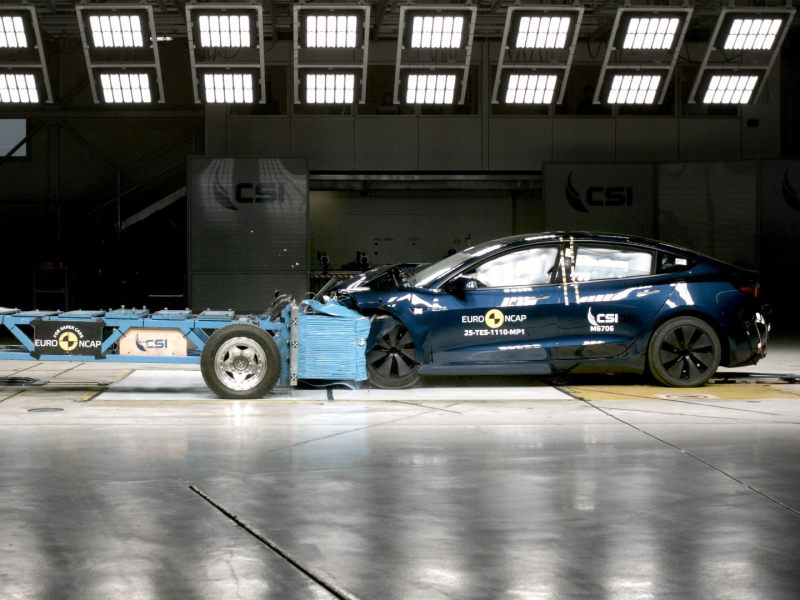
Tesla Model 3 scored the highest in 2025 Euro NCAP, becoming the safest new car in Europe
AshleyJul 8, 2025
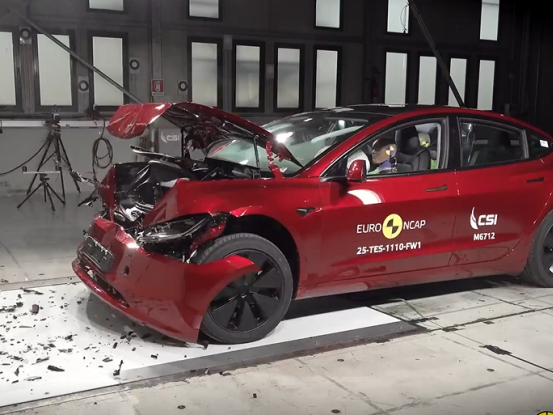
2025 Tesla Model 3: Euro NCAP 5-Star Safety Champion
LienMay 23, 2025

Tank vs Tesla: The Underbody Wins
WilliamMay 12, 2025
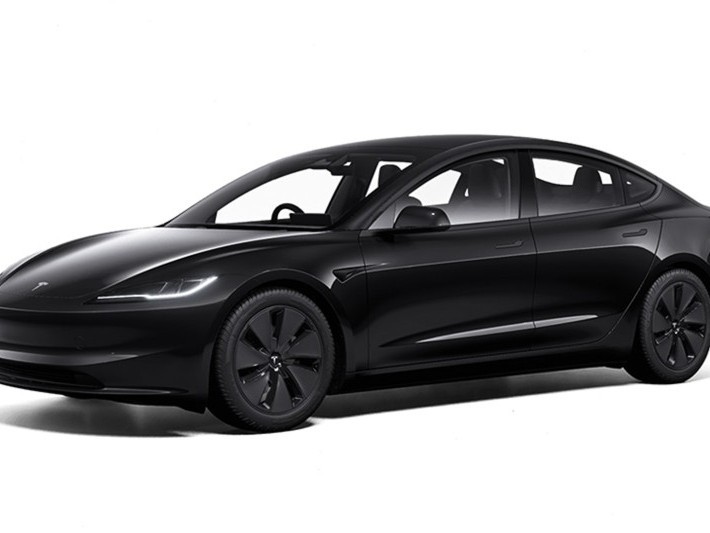
Want a Comfortable Long-Range Ride? Tesla Model 3 Delivers!
WilliamApr 17, 2025
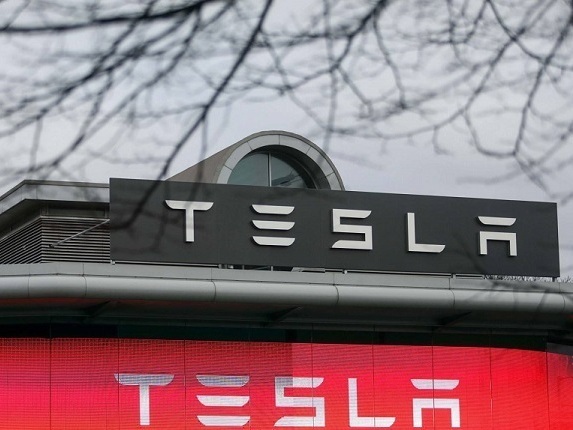
Potentially the Largest Automotive Recall: Tesla to Replace FSD Hardware for 4 Million Vehicles
JohnApr 16, 2025
View More











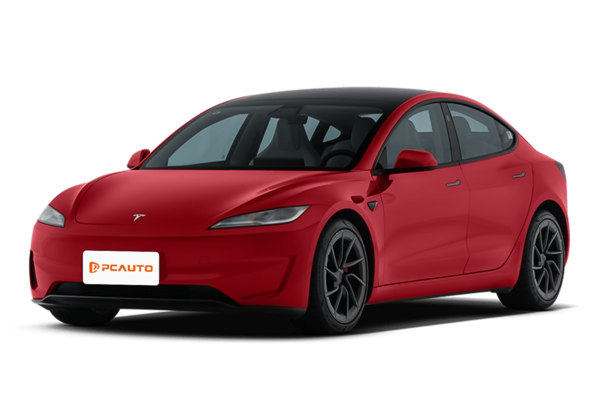
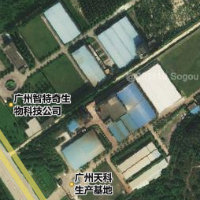
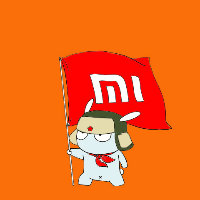

Pros
Cons